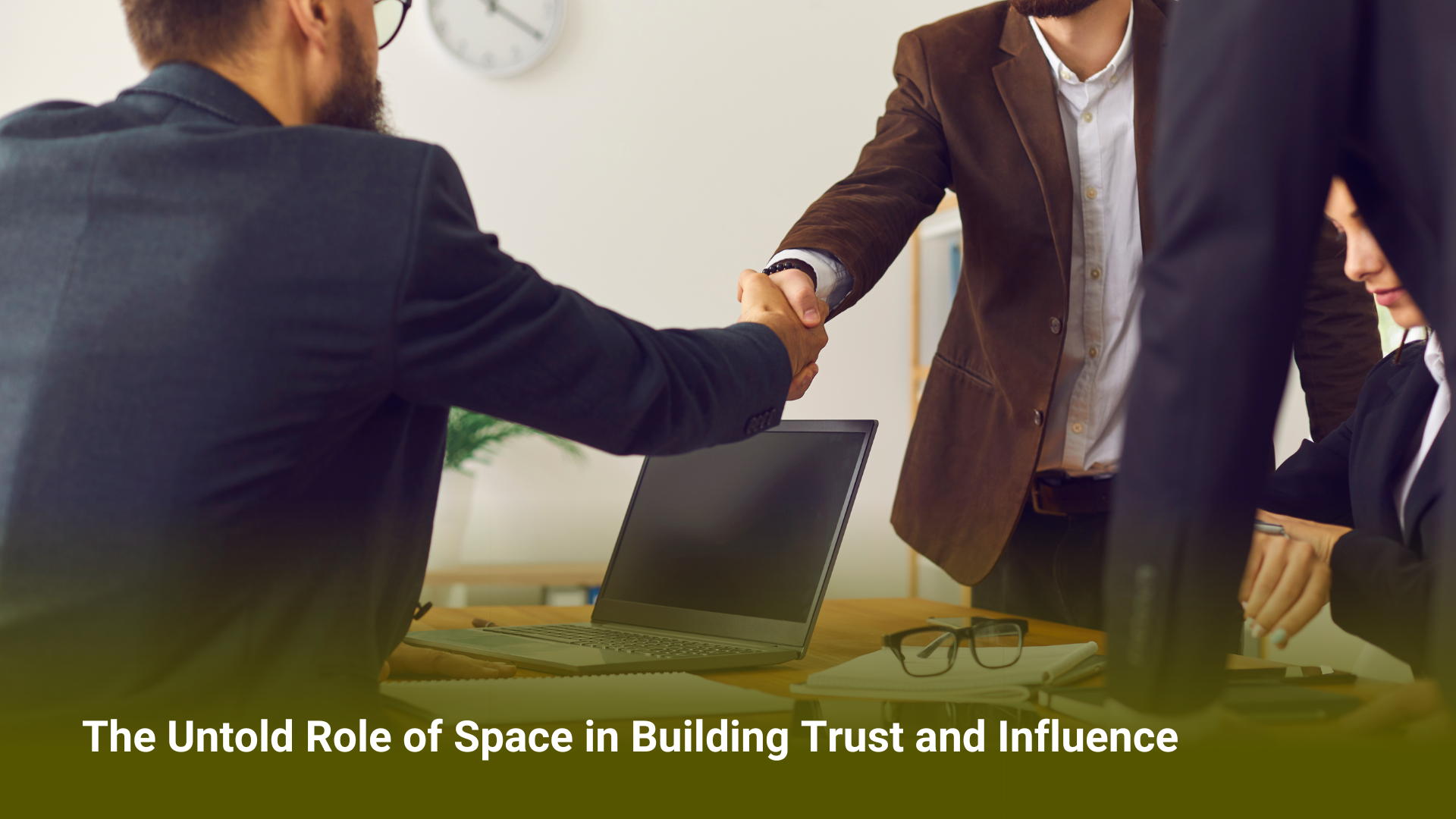The Untold Role of Space in Building Trust and Influence

A deep-dive into how layout, design, and even lighting silently shape human connections during meetings and events.
In a world where words are carefully crafted, presentations finely polished, and attendees selectively curated, one silent yet powerful force often goes unnoticed: the space in which everything happens.
Whether it’s a boardroom pitch, an educational workshop, a panel discussion, or a closed-door negotiation, the environment plays a decisive role in shaping outcomes. Yet, most professionals and planners overlook how space influences trust, authority, and connection.
This article uncovers the subtle psychology of physical spaces — and why choosing the right venue isn’t just logistics; it’s strategy.
1. The Psychology of Space: More Than Just Walls and Chairs
Ever wondered why you instantly feel relaxed in certain places, but tense in others? That’s not coincidence. Environmental psychology tells us that physical surroundings significantly impact our behavior, mood, and decision-making.
-
Open layouts foster transparency and ease of communication.
-
Natural light reduces stress and increases alertness.
-
Good acoustics make conversations more effective and intimate.
A well-chosen venue unconsciously signals respect, professionalism, and intent. A cluttered, poorly lit, or noisy room? It can send the opposite message.
2. First Impressions Happen Before You Speak
Imagine this: Two consultants are pitching the same solution. One does it in a bright, elegant room with thoughtful seating. The other in a cramped, windowless space with flickering lights. Who has the advantage before even saying a word?
The answer is obvious. In fact, studies show people make up their minds within the first 7 seconds of an encounter. And yes, that includes the environment.
A premium, well-designed space enhances your credibility. It says: "We care about your experience. We are serious about quality."
3. Spatial Design = Silent Communication
Space communicates. Whether it's the distance between chairs or the color of the walls, every detail speaks.
-
Circular seating encourages equality and dialogue.
-
Stage-style layouts highlight authority and leadership.
-
Breakout zones promote informal bonding and deeper collaboration.
By choosing a venue that aligns with your intent, you're telling participants what to expect without saying a word.
Want them to listen? Use intimate, focused spaces. Want them to engage? Choose open, flexible layouts.
4. Building Trust Through Comfort
Trust doesn’t grow in discomfort. Cold air-conditioning, echo-filled rooms, and insufficient parking don’t just frustrate guests — they become distractions that reduce focus, engagement, and receptiveness.
On the other hand:
-
Comfortable furniture helps people stay longer and listen better.
-
Clean, inviting décor creates a sense of safety.
-
Well-located venues with hassle-free access reduce stress.
A thoughtfully chosen space becomes an unspoken host, welcoming and reassuring every guest.
5. Influence Is Amplified by Ambiance
Think of the most powerful meetings in history — peace treaties, billion-dollar deals, leadership summits. They weren’t held in cafes or casual corners. They were held in places that matched the weight of the conversation.
Ambiance sets the tone.
From lighting to temperature to color palette, ambiance shapes emotion. Warm tones signal approachability. High ceilings spark creativity. Quiet corridors add gravity. Smart lighting enhances clarity.
If your message is powerful, your space should echo that power.
6. The Subconscious Scorecard
Every attendee walks in with an invisible checklist:
-
Is this space organized?
-
Do I feel respected here?
-
Does this feel professional?
You may not hear these questions spoken aloud, but answers are formed in microseconds. And they impact everything from attention span to brand perception to post-event action.
When your venue scores high on this subconscious test, everything else becomes easier.
7. Designing for Connection
One of the most overlooked outcomes of an event is networking. Yet, most venues don’t enable it.
Spaces that foster trust often include:
-
Transition zones like lounges, coffee corners, and terraces
-
Clear movement flow that encourages mingling
-
Softer spaces that make conversations more natural
These aren’t just design luxuries. They’re trust accelerators.
8. Your Space Is Part of Your Brand
Whether you’re a startup, NGO, or enterprise, your choice of venue reflects your values.
A clean, smartly designed space shows you value professionalism and care. A vibrant, creative space shows you're innovative. A formal, high-end venue shows you're serious and established.
When people walk in, they don’t just see a room. They see you.
Final Thought: Make Space Work for You
In a hyper-connected, distraction-filled world, attention and trust are rare assets.
Your physical space is one of your most underutilized tools to earn them.
So next time you’re planning a meeting, event, or workshop — don’t just ask about price or location. Ask: What does this space say about me? Will it help build the trust and influence I seek?
The answer could change everything.
